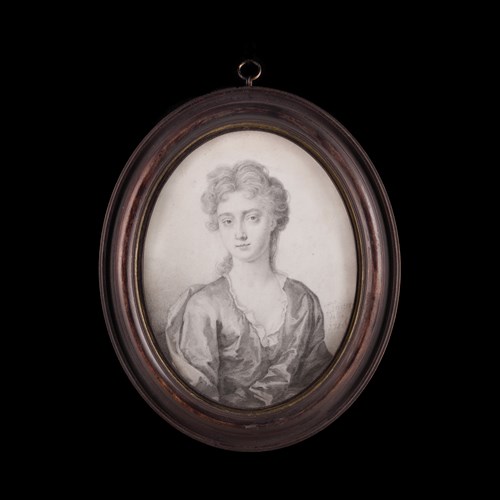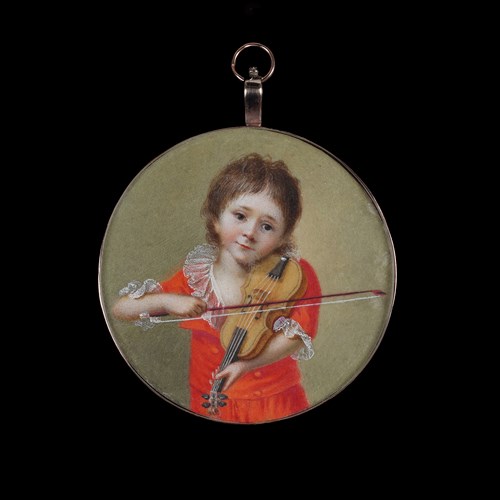Marketplace
A portrait miniature of a Gentleman, wearing black doublet and white collar trimmed with lace, blue background and gold border
ENGLISH SCHOOL (17th century)
A portrait miniature of a Gentleman, wearing black doublet and white collar trimmed with lace, blue background and gold border
The Limner Company : Portrait Miniature
Date circa 1620
Medium Watercolour and bodycolour on vellum
Dimension 1 cm (0³/₈ inches)
Although this period of miniature painting, or ‘limning’ was dominated by the artists thought of as some of the greatest exponents of the artform in Nicholas Hilliard and Isaac Oliver, it is clear from contemporary commentary that other artists were also practising. Hilliard likely had several artists working for him whose names we will never know. There was also some interest at this period in painting miniatures as an amateur – a refined artform which would have shown a certain sophistication in the gentleman-artist.
The blue background of this miniature would have been considered rather old fashioned in the first quarter of the 17th century, but was still considered an effective backdrop, particularly on this minute scale. While Hilliard has experimented with his red velvet backgrounds earlier in the 1590s, by the 1620s a more naturalistic approach was being taken, with glimpses of landscape appearing.
This tiny portrait likely originally included a lid, which would have kept the miniature a secret from prying eyes. Often miniatures worn by women were suspended from a silk cord at their neck and tucked into a bodice – although Lady Ayres was caught by Lord Herbert of Cherbury in 1611 admiring a portrait of him which she had worn ‘so low that she hid it under her breasts’. Although we may not be able to identify the sitter, it is clear that this was a treasured image, set into a finely enamelled case. However, the modest size of this work is also a reminder that miniatures were also painted for those not necessarily at the highest echelons of society or part of the aristocratic inner circle at court, but often commissioned by wealthy merchants.
The blue background of this miniature would have been considered rather old fashioned in the first quarter of the 17th century, but was still considered an effective backdrop, particularly on this minute scale. While Hilliard has experimented with his red velvet backgrounds earlier in the 1590s, by the 1620s a more naturalistic approach was being taken, with glimpses of landscape appearing.
This tiny portrait likely originally included a lid, which would have kept the miniature a secret from prying eyes. Often miniatures worn by women were suspended from a silk cord at their neck and tucked into a bodice – although Lady Ayres was caught by Lord Herbert of Cherbury in 1611 admiring a portrait of him which she had worn ‘so low that she hid it under her breasts’. Although we may not be able to identify the sitter, it is clear that this was a treasured image, set into a finely enamelled case. However, the modest size of this work is also a reminder that miniatures were also painted for those not necessarily at the highest echelons of society or part of the aristocratic inner circle at court, but often commissioned by wealthy merchants.
Date: circa 1620
Medium: Watercolour and bodycolour on vellum
Dimension: 1 cm (0³/₈ inches)
Provenance: Private Collection, UK
More artworks from the Gallery






, wearing a blue fur_T638814186510621855.JPG?width=500&height=500&mode=pad&scale=both&qlt=90&format=jpg)


